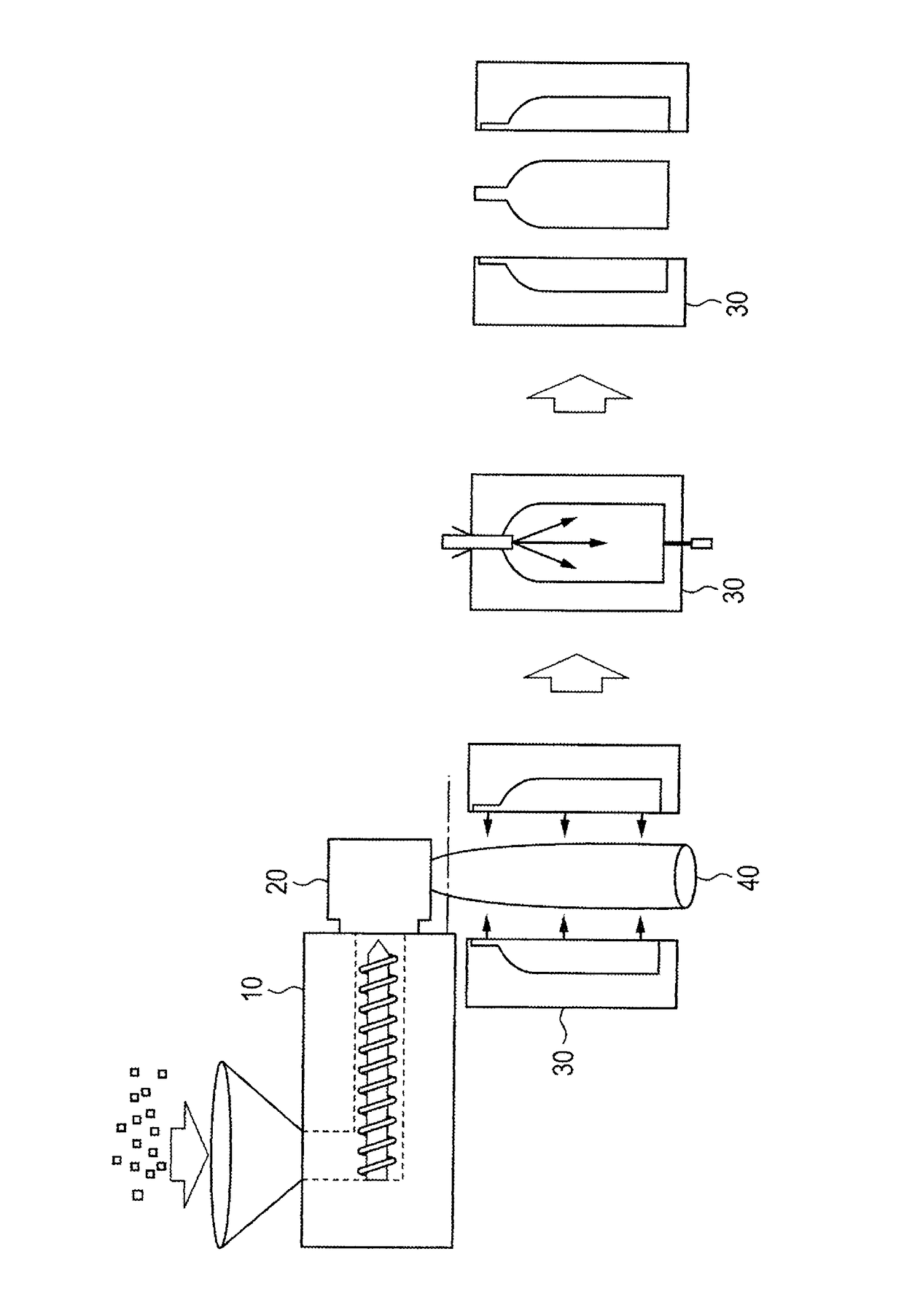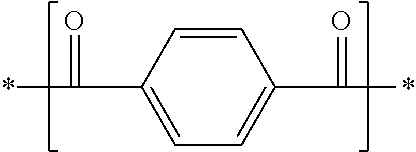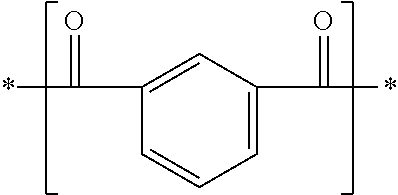Semiaromatic polyamide, semiaromatic polyamide resin composition, and molded article
a semiaromatic polyamide and polyamide resin technology, applied in the field of semiaromatic polyamide resin composition and molded articles, can solve the problems of insufficient polyamide, inability to be used in such applications, and significant thermal degradation of polymer, and achieves low water absorption properties, heat resistance and mechanical properties, and good balance. the effect of the
- Summary
- Abstract
- Description
- Claims
- Application Information
AI Technical Summary
Benefits of technology
Problems solved by technology
Method used
Image
Examples
example 1
[0172]An autoclave having an internal volume of 13.6 L was charged with 1,906 g (11.5 mol) of terephthalic acid, 2,800 g (24.1 mol) of 1,6-hexanediamine, 1,271 g (7.6 mol) of isophthalic acid, 699 g (4.8 mol) of adipic acid, 36.5 g (0.3 mol) of benzoic acid, 5.7 g (0.08 wt % relative to raw materials) of sodium hypophosphite-hydrate and 545 g of distilled water, and was purged with nitrogen. Stirring was started at 190° C., and the internal temperature was raised to 250° C. over 3 hours. The internal pressure of the autoclave here was increased to 3.03 MPa. After the reaction was continued in this state for 1 hour, the autoclave was opened to the atmosphere through a spray nozzle disposed at the bottom thereof, and a low-degree condensate was taken out. Thereafter, the low-degree condensate was cooled to room temperature, then pulverized by a pulverizer so as to have a particle size of 1.5 mm or less, and dried at 110° C. for 24 hours. The water content and the intrinsic viscosity [...
example 2
[0173]Polyamide resin (PA2) was prepared in the same manner as in Example 1 except that the amounts of terephthalic acid and isophthalic acid were changed. Physical properties of the resulting polyamide resin are shown in Table 1.
example 3
[0174]Polyamide resin (PA3) was prepared in the same manner as in Example 1 except that the amounts of terephthalic acid and isophthalic acid were changed. Physical properties of the resulting polyamide resin are shown in Table 1.
PUM
| Property | Measurement | Unit |
|---|---|---|
| temperature | aaaaa | aaaaa |
| pressure | aaaaa | aaaaa |
| mass % | aaaaa | aaaaa |
Abstract
Description
Claims
Application Information
 Login to View More
Login to View More - R&D
- Intellectual Property
- Life Sciences
- Materials
- Tech Scout
- Unparalleled Data Quality
- Higher Quality Content
- 60% Fewer Hallucinations
Browse by: Latest US Patents, China's latest patents, Technical Efficacy Thesaurus, Application Domain, Technology Topic, Popular Technical Reports.
© 2025 PatSnap. All rights reserved.Legal|Privacy policy|Modern Slavery Act Transparency Statement|Sitemap|About US| Contact US: help@patsnap.com



